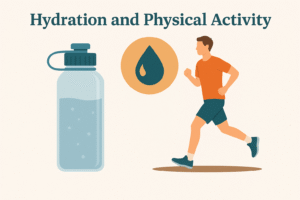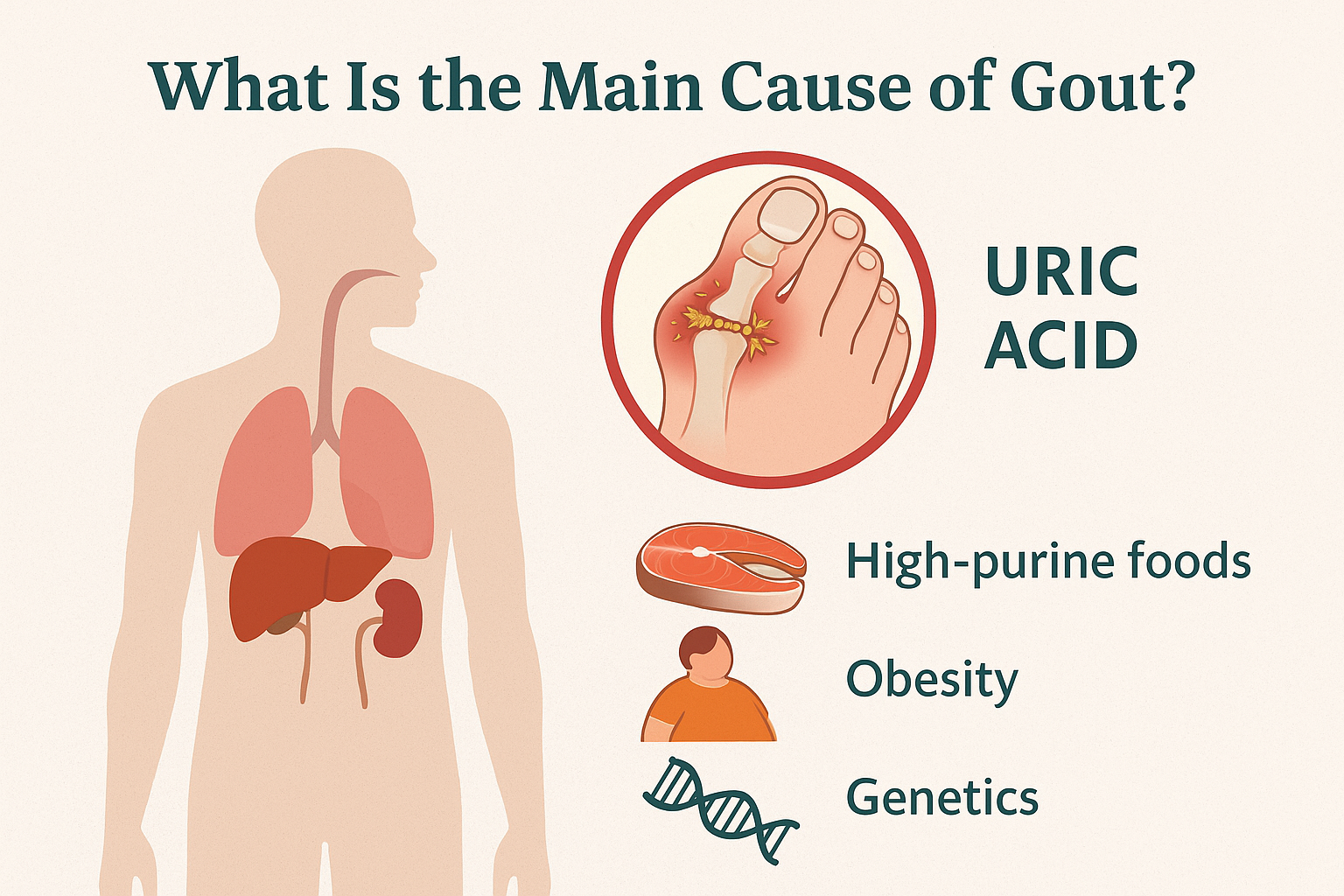Gout is a type of inflammatory arthritis that causes sudden and severe attacks of pain, swelling, redness, and tenderness, often in the big toe. These painful flare-ups are no joke and can wake you up in the middle of the night, feeling like your toe is on fire. What is the main Cause of Gout?
How Common Is Gout?
It’s surprisingly common. Gout affects millions of people globally, especially men over 40 and postmenopausal women. With lifestyle factors playing a big role, the numbers keep rising.
Understanding the Root Cause
Uric Acid Buildup – The Culprit
Gout is mainly caused by an excess buildup of uric acid in the blood. But what’s the deal with uric acid?
What Is Uric Acid?
Uric acid is a waste product formed when your body breaks down substances called purines. These are naturally found in your body and in certain foods like red meat, seafood, and alcoholic drinks.
How Does It Accumulate in the Body?
Normally, uric acid dissolves in your blood, passes through your kidneys, and leaves your body through urine. But sometimes, the body produces too much uric acid, or the kidneys excrete too little. When this happens, uric acid builds up and forms sharp, needle-like crystals in joints, causing pain and inflammation.
Main Cause of Gout – Hyperuricemia
Definition of Hyperuricemia
Hyperuricemia is the medical term for too much uric acid in the blood. It doesn’t always cause symptoms, but it sets the stage for gout when uric acid crystals deposit in joints.
How Hyperuricemia Leads to Gout
Once uric acid levels rise past a certain point, your body can’t manage it. Crystals start forming, usually in cooler parts of the body (like the big toe), triggering intense inflammatory responses.
Factors That Contribute to High Uric Acid
Poor kidney function
Excessive purine intake
Crash diets or fasting
Dehydration
Certain medications
Dietary Triggers of Gout
Purine-Rich Foods
Foods high in purines can spike uric acid levels. These include:
Organ meats (like liver)
Anchovies, sardines, mackerel
Gravies and meat extracts
Alcohol and Sugary Beverages
Alcohol, especially beer, is notorious for raising uric acid. Sugary drinks loaded with fructose also contribute to gout flares.
Red Meat and Seafood
Frequent consumption of red meat and shellfish can lead to repeated gout attacks. Moderation is key here.
Lifestyle and Behavioral Causes
Sedentary Lifestyle
Lack of physical activity can worsen gout by contributing to weight gain and reducing metabolic efficiency.
Obesity and Weight Gain
Extra body weight means more tissue turnover and more purines, leading to more uric acid. Plus, fat tissue makes it harder for the kidneys to eliminate it.
Dehydration
Water helps flush out uric acid. If you’re not drinking enough, your uric acid levels can spike easily.

Genetic and Medical Factors
Family History
If gout runs in your family, your risk increases. Genetics affect how your body processes uric acid.
Kidney Disease
The kidneys play a crucial role in filtering uric acid. When they don’t work properly, uric acid piles up.
Other Medical Conditions
Hypertension, diabetes, and metabolic syndrome all raise your risk for gout.
Medications That Cause Gout
Diuretics
Commonly used for high blood pressure, diuretics reduce kidney function slightly, which in turn raises uric acid levels.
Aspirin and Certain Immunosuppressants
Low-dose aspirin and medications used in organ transplants can mess with uric acid processing.
Gout Risk by Age and Gender
Why Men Are More Affected
Men typically have higher uric acid levels than women, especially after puberty. This puts them at a greater risk.
Women After Menopause
Estrogen helps eliminate uric acid, so premenopausal women are protected. But post-menopause, their risk rises dramatically.
Symptoms of Gout
Classic Symptoms
Sudden, intense joint pain (often at night)
Swelling, redness, and warmth in the joint
Limited range of motion
Gout Attacks and Stages
Gout progresses in stages:
Asymptomatic Hyperuricemia – High uric acid but no symptoms.
Acute Gout Attack – Intense pain, usually lasting 3-10 days.
Intercritical Period – Symptom-free time between attacks.
Chronic Tophaceous Gout – Frequent attacks and permanent joint damage.
Preventing Gout
Diet Adjustments
Avoid high-purine foods
Limit alcohol and sugary drinks
Eat more fruits, vegetables, and whole grains
Hydration and Physical Activity
Drink at least 8 glasses of water a day
Maintain a healthy weight
Exercise regularly
Treating Gout
Medications
Doctors may prescribe:
Allopurinol or febuxostat (to lower uric acid)
Colchicine and NSAIDs (to manage pain)
Corticosteroids (for severe inflammation)

Natural Remedies
Cherries or cherry juice
Apple cider vinegar
Ginger root
Turmeric
Long-Term Management
Consistent medication, lifestyle changes, and regular checkups are vital to keep gout under control.
When to See a Doctor
If you experience intense joint pain—especially in the big toe—or have multiple attacks in a year, it’s time to see a doctor. Early treatment prevents long-term joint damage.
Final Thoughts on Gout Causes
The main cause of gout is hyperuricemia, often due to lifestyle, diet, genetics, or underlying medical conditions. Understanding and managing the root causes can help you prevent painful flare-ups and live a more comfortable life. Small daily habits—like drinking more water and avoiding trigger foods—go a long way.
FAQs
Can stress cause gout?
Stress doesn’t directly cause gout, but it can trigger flare-ups in people with high uric acid levels.
Is gout always caused by diet?
No. While diet is a major factor, genetics, kidney issues, and certain medications also play key roles.
Can I prevent gout if it runs in my family?
Yes! Maintaining a healthy lifestyle and monitoring uric acid levels can help you avoid gout even if you’re genetically predisposed.
What’s the fastest way to lower uric acid?
Hydration, avoiding purine-rich foods, and certain medications like allopurinol can help reduce uric acid levels quickly.
Is gout a lifelong condition?
It can be, but with proper treatment and lifestyle changes, most people can manage it effectively and reduce flare-ups.

